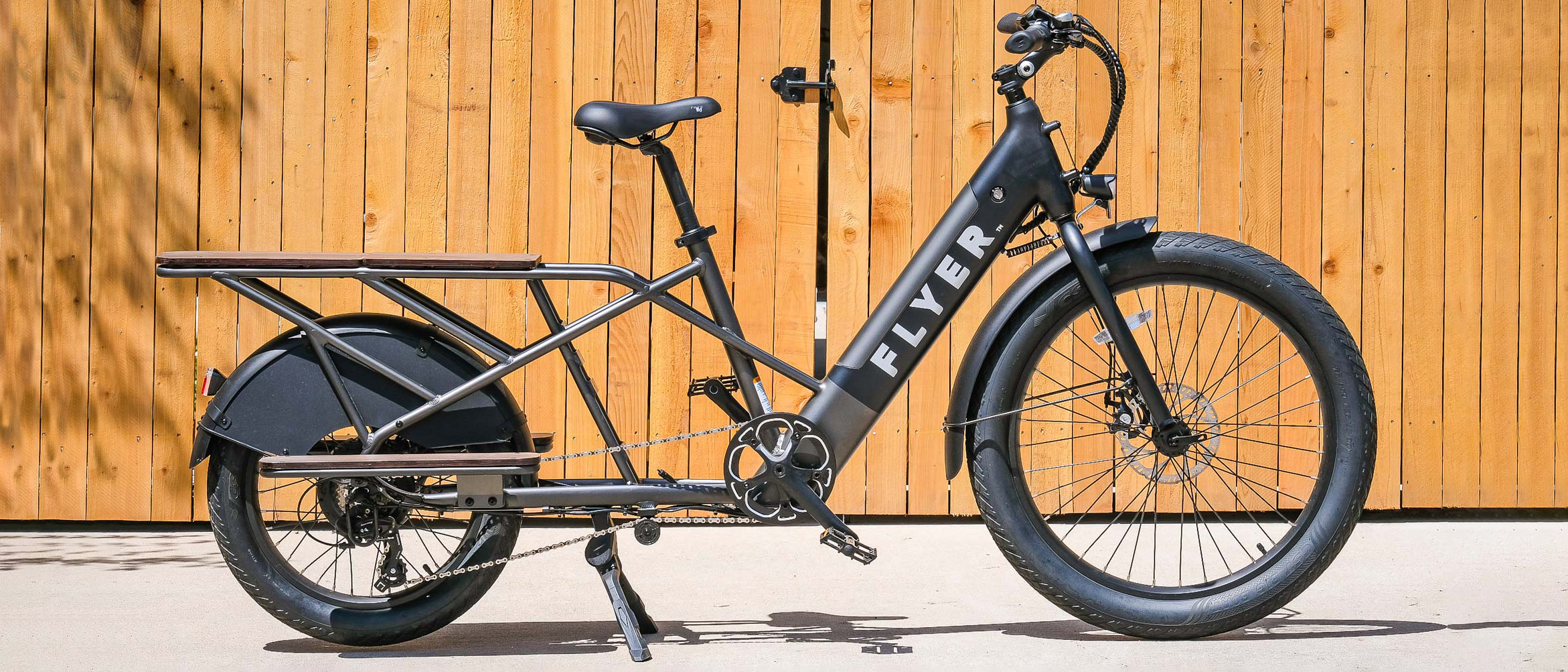Tom's Guide Verdict
The Flyer L885 is a capable, surprisingly lithe bike that allows car replacement trips at an affordable price, but there are a lot of drawbacks — most notably the bike’s weight.
Pros
- +
Comfortable ride
- +
Easy step-through design
- +
Lots of good accessories
- +
Motor engages quickly
Cons
- -
Bike is very heavy with accessories
- -
Kickstand isn’t easy to use
- -
Loud motor
Why you can trust Tom's Guide
Weight: 73 pounds
Motor: 500W brushless rear hub motor
Battery: Samsung Lithium-Ion, 48V, 15Ah, 500Wh
Charge time: up to 10 hours
Max advertised range: 50 miles
Max advertised assist speed: 20mph
Drivetrain: Shimano 7-speed
Wheels: 26-inch front and 20-inch rear
Assist: 5 levels; throttle included
Maximum gross capacity: 400 pounds
As the shift in transportation continues away from cars, particularly in urban centers, we can expect to see more familiar names painted on e-bike down tubes. Flyer is one of them; it’s short for Radio Flyer, everyone’s favorite red wagon from their childhood.
The Flyer L885 cargo bike is one of two initial models from Flyer. It’s clearly designed with the family in mind: it can haul up to 400 pounds total, the rear storage area features footrests for hauling the kids or your friends, and there are lots of accessories to make the L885 your automobile replacement plan.
But like any newcomer to the space, Radio Flyer has room to learn more about its consumers and improve the product accordingly. The L885 is a good bike, but there are a few key drawbacks that keep it from approaching the cream of the cargo bike crop. Read the rest of our Flyer L885 review to see why.
Flyer L885 ebike review: Price and availability
The L885 costs $2,000 and is available for purchase through the Radio Flyer website. You can choose from three sizes (Radio Flyer provides a sizing chart) and four colors.
You can customize your L885 with accessories before you add it to your cart. From there, you can check out or choose financing through Affirm. Radio Flyer offers free shipping on the L885 across the continental United States.
The bike will need some assembly upon arrival, and Radio Flyer offers plenty of how-to videos if you want to try to get it built yourself. You can also choose the Mobile Service option, which means Velofix (a third party mechanic service) will come directly to your house to assemble the bike.
Flyer L885 ebike review: Design
The L885 weighs 73 pounds — and 108 with all the accessories — which is heavy even for a large cargo bike. (Among the best electric bikes, our favorite cargo model, the Yuba SuperCargo CL, weighs 20 pounds less.)
The aluminum frame rolls on a 26-inch front wheel with a wide 3-inch tire, and a smaller 20-inch rear wheel similarly shod in a 3-inch wide tire.
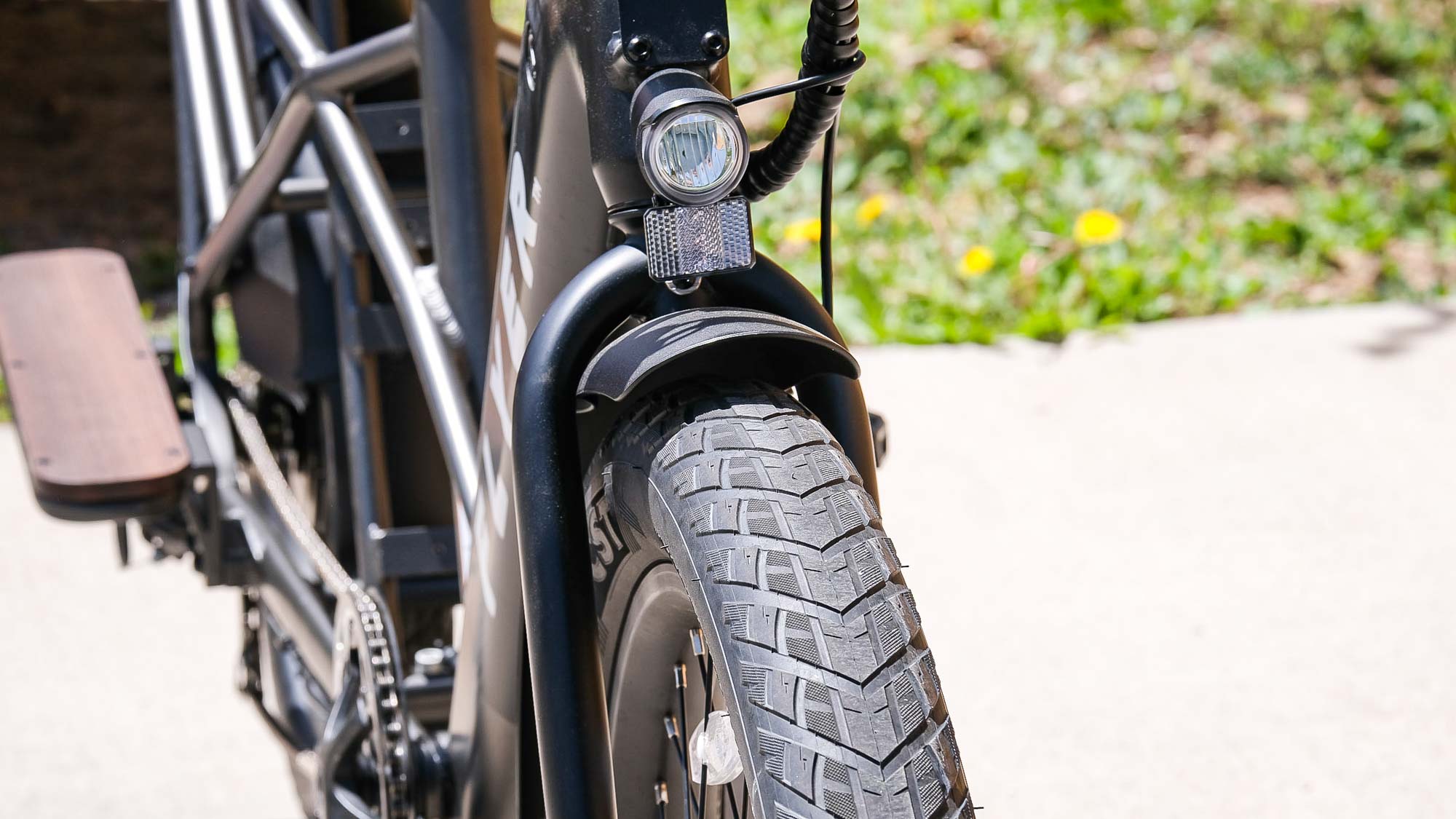
Shimano provides a 7-speed drivetrain to give you more cadence options. Cable-actuated disc brakes from Tektro provide plenty of stopping power and modulation.
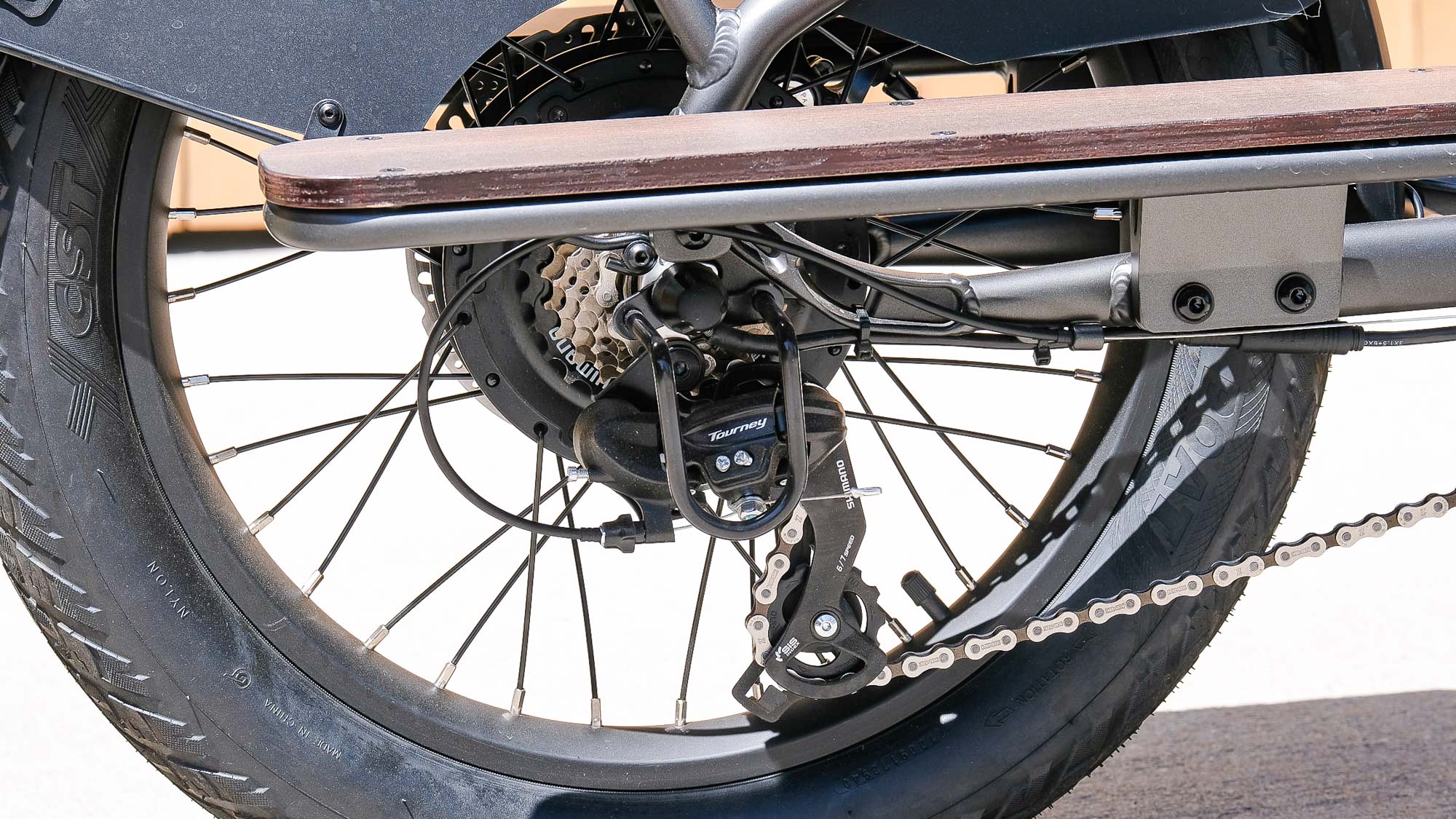
The 500W motor integrates into the rear hub and pairs with a 48V, 15Ah lithium-ion battery with Samsung cells. The battery is integrated cleanly into the down tube of the bike and is removable using the included keys.
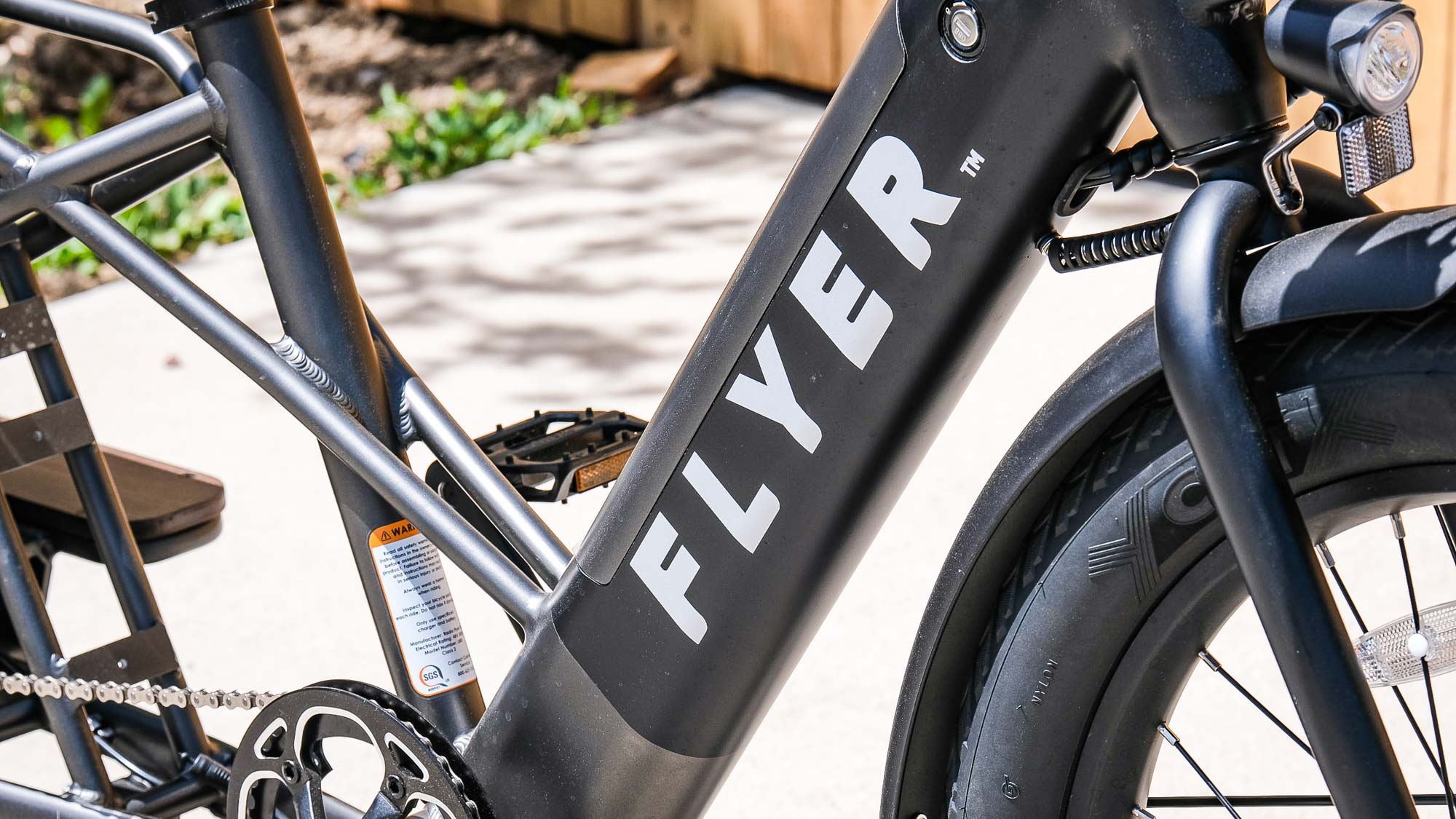
There are five pedal assist levels, and depending on which level you use most often — as well as the terrain and conditions in which you’ll ride — Flyer says you should get between 30 and 50 miles out of a charge.
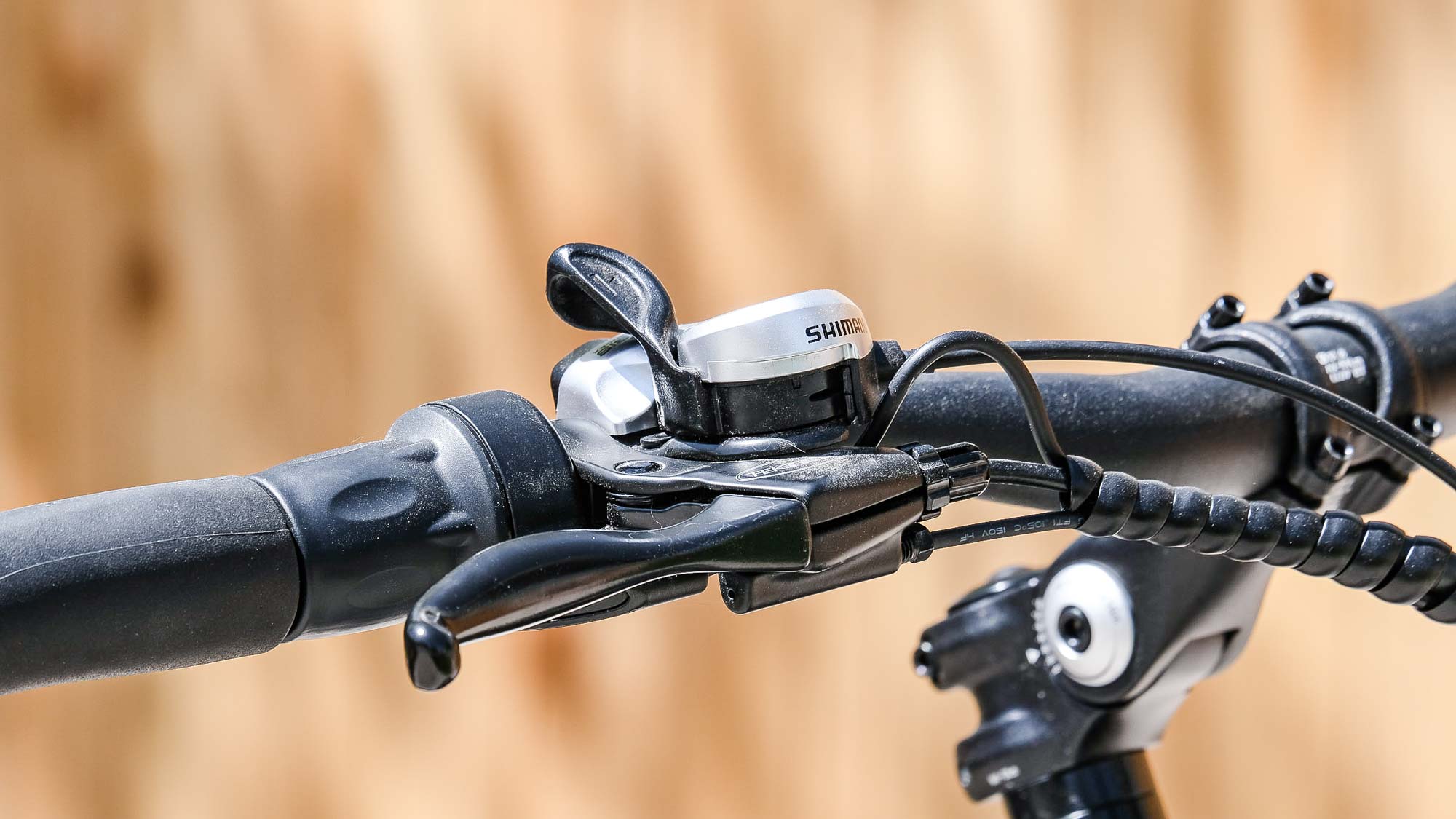
The L885 includes a throttle, which comes in handy especially when you’re getting started from a dead stop. There’s also a handlebar-mounted LCD display where you can see which mode you’re in, how fast you’re going, how much battery charge you’ve got left, and more.
The L885 comes with integrated front and rear LED lights. And there’s a dual-arm kickstand that keeps the bike planted and stable when you’re loading and unloading.
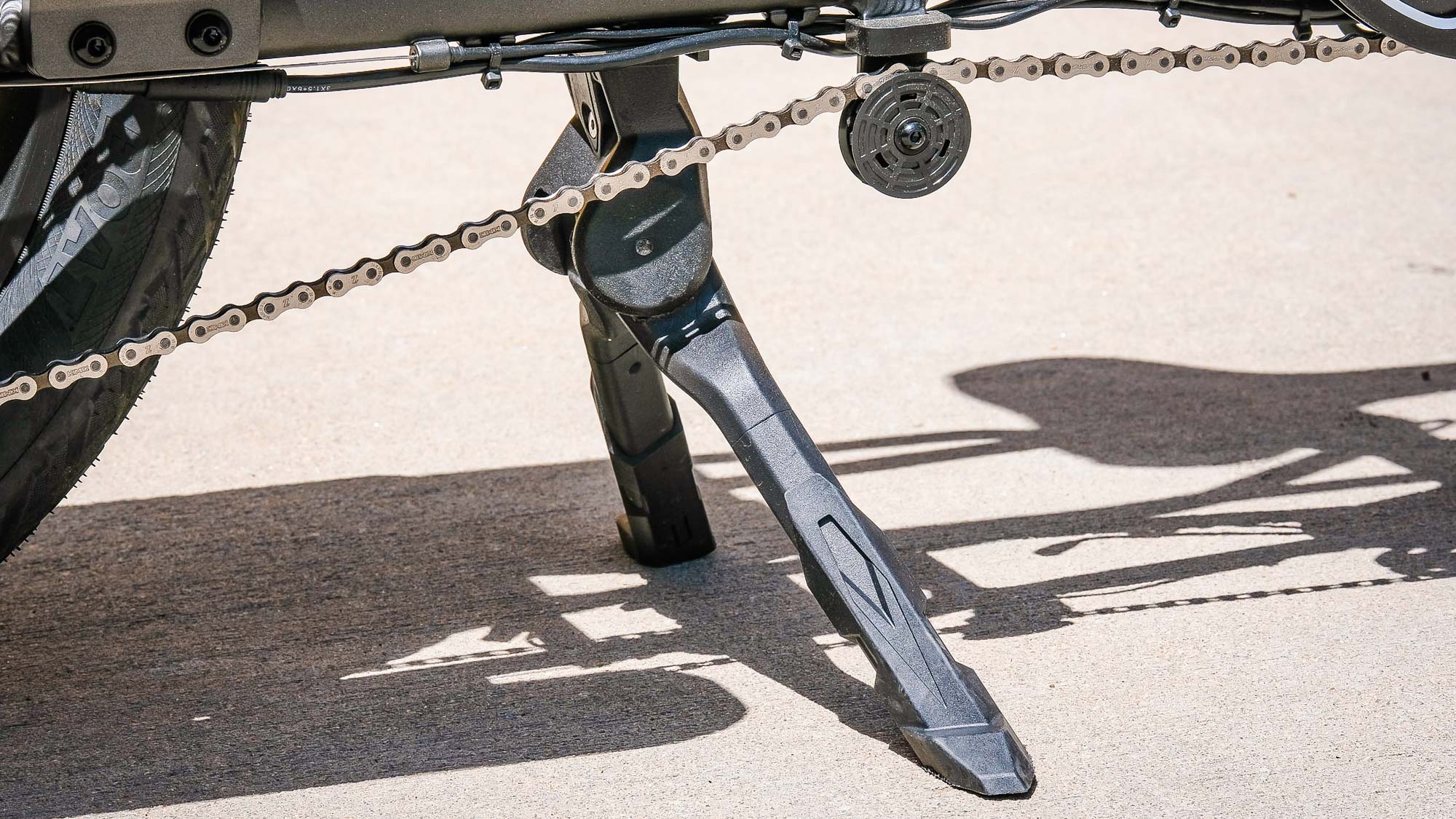
In the stock configuration, the L885 comes with faux-wood panels on the rear rack, as well as footrests for passengers.
Flyer L885 ebike review: Performance
The first thing I noticed about the L885, before I even left the driveway, was its weight and the amount of effort you need to put into getting the bike off the kickstand. The weight factors into that struggle, but the kickstand itself is also poorly placed and difficult to both engage and disengage. It’s super-stable when engaged, though, so you’ll be able to load the kids and the groceries without worry. Getting the bike going from there? Well, that’s going to take a bit of muscle.
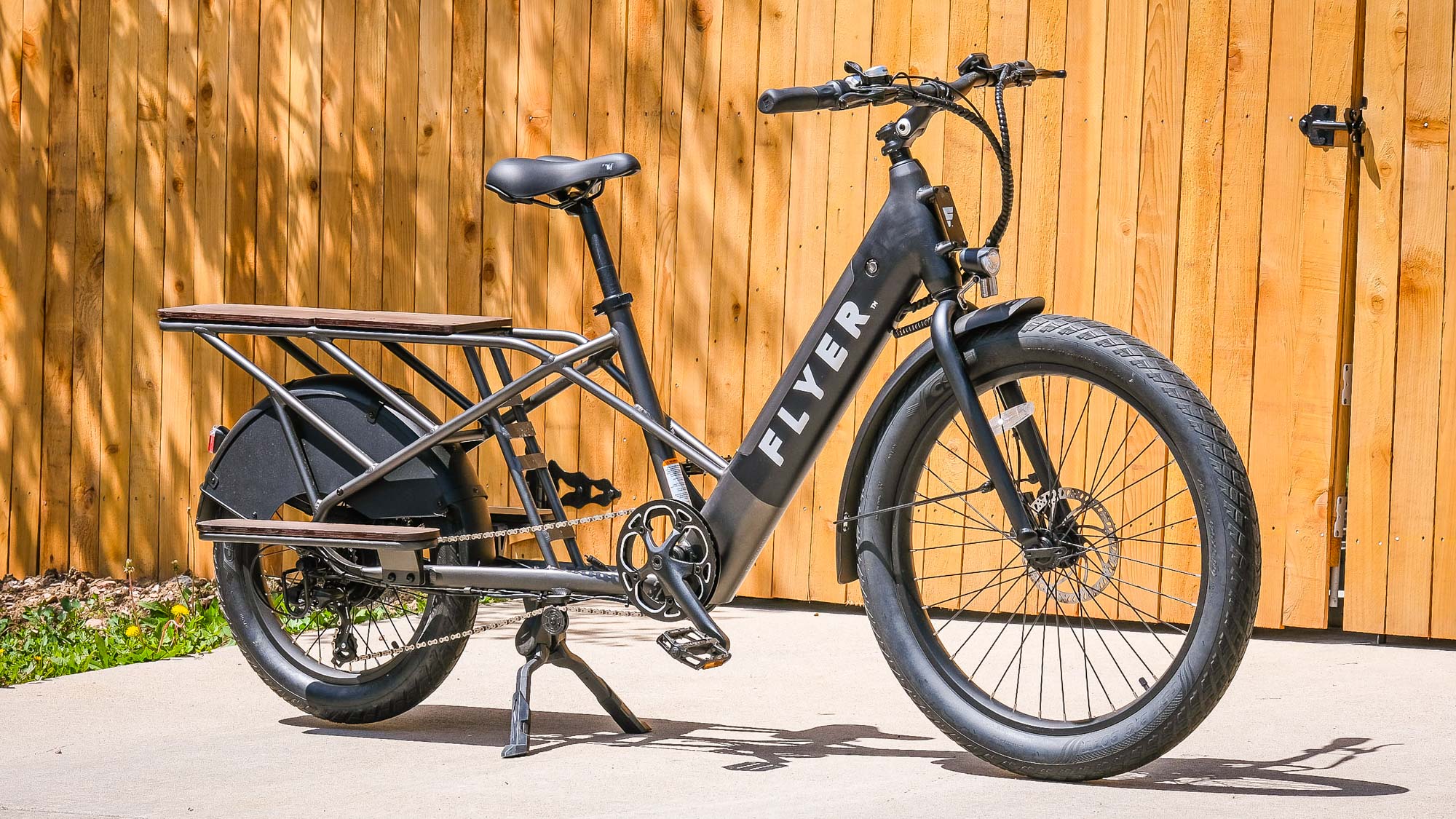
The step-through design makes it easy to get on the bike and get going. The L885’s LCD control is mounted on the left side of the handlebar and is easy enough to use. It presents all the relevant info you’ll need, and it’s easy to read even in direct sunlight.
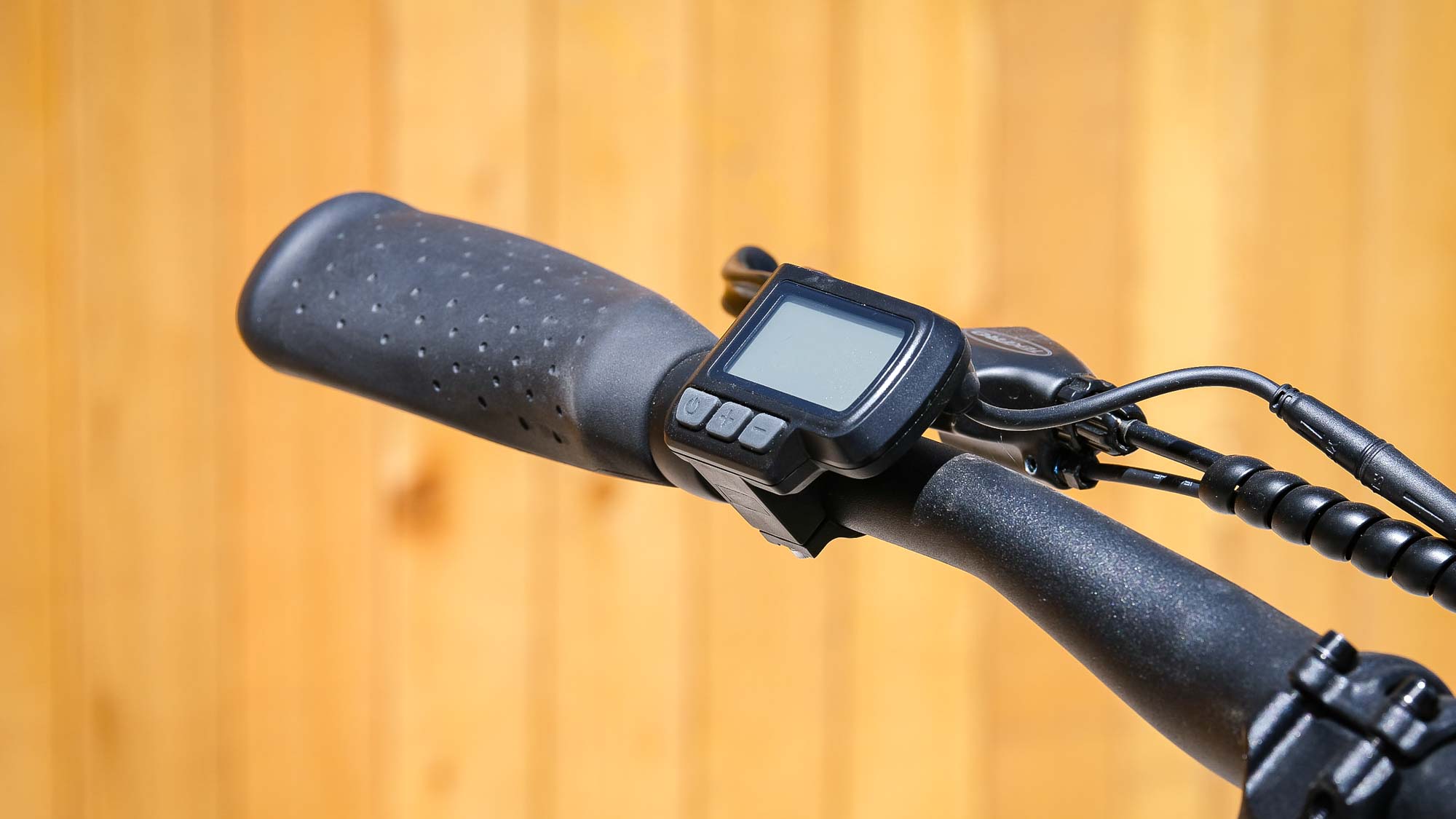
The motor is very loud. At this point I’m used to people stopping to stare when I ride cargo bikes, but they don’t generally get startled from the noise e-bikes can make. The L885 definitely makes a louder whining noise than just about every other cargo bike I’ve tested.
Like most hub-mounted systems, the L885’s motor comes with two drawbacks: One, it takes about a half a pedal stroke before the assist kicks in; and two, the motor can feel underpowered, especially when starting from a dead stop on hills.
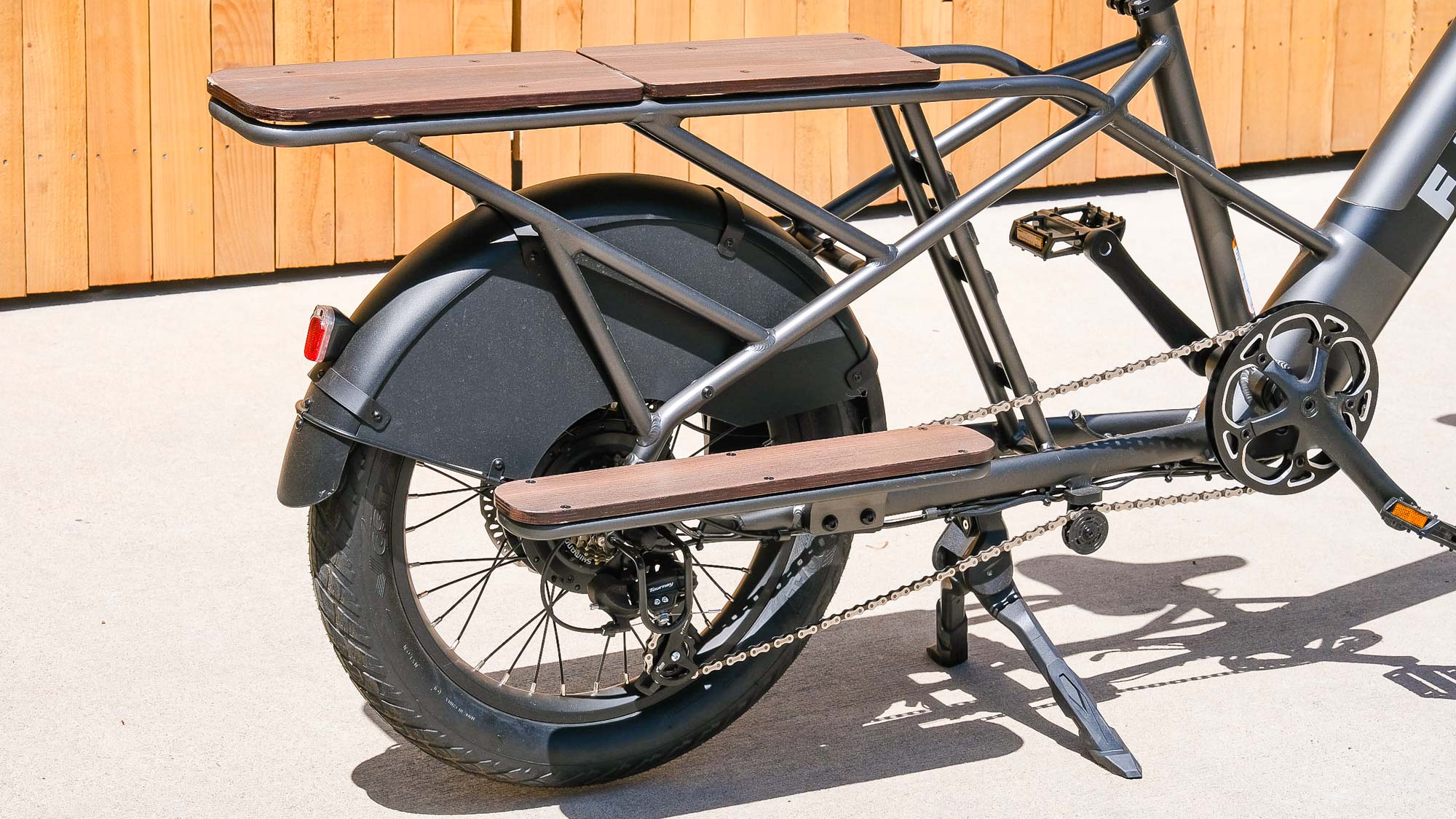
That said, the L885’s motor actually felt quite consistently powerful in most situations, except on those steep pitches from a dead stop. Given the bike’s weight, that’s impressive.
The big, balloon-like front tire soaks up a lot of road chatter, especially if you run the tire pressure a bit low. That can affect handling slightly, so don’t drop your pressure too low or you’ll feel like the tires are bogging you down in corners. Generally, however, the L885 offers a fun and surprisingly peppy ride given its length and weight.
The bike does feel more ‘pedal-forward’ than other cargo bikes I’ve tested. In other words, it feels like the pedals are slightly too far forward of the saddle. And the pedals feel spaced very wide — in cycling parlance, that’s called the Q-factor — so you’ll find yourself in a wide pedaling stance. That’s good for accommodating a wider swath of rider body types, but smaller folks may find this uncomfortable.
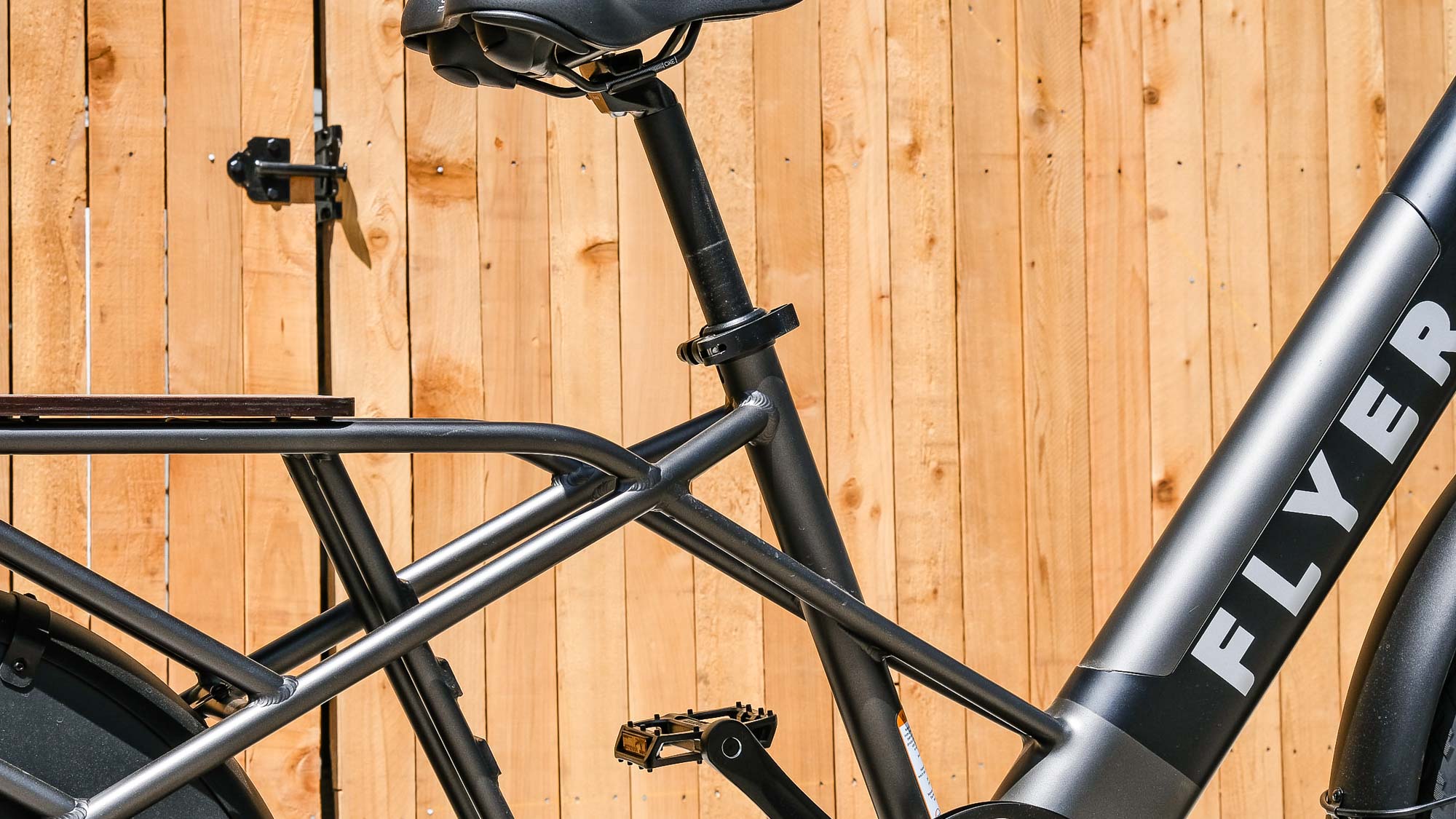
Overall, the L885 is a fun and comfortable ride, and the build feels mostly stout aside from a few niggles. The front light on my test bike didn’t turn on automatically, and I couldn’t figure out how to do it manually. And the rear rack panel, which is made out of a layered particleboard, chipped almost immediately. There’s a crack running between the two bolts that secure it to the frame, too. This is an easy opportunity for Flyer to improve its quality by replacing this panel with higher-quality material.
Flyer L885 ebike review: Battery life and range
The 30-50-mile advertised range is a fairly wide one. After six miles of riding on my first ride, mostly in the highest setting and being very generous with the throttle assist, the battery indicator still showed a full charge. So the advertised range seems more than reasonable.
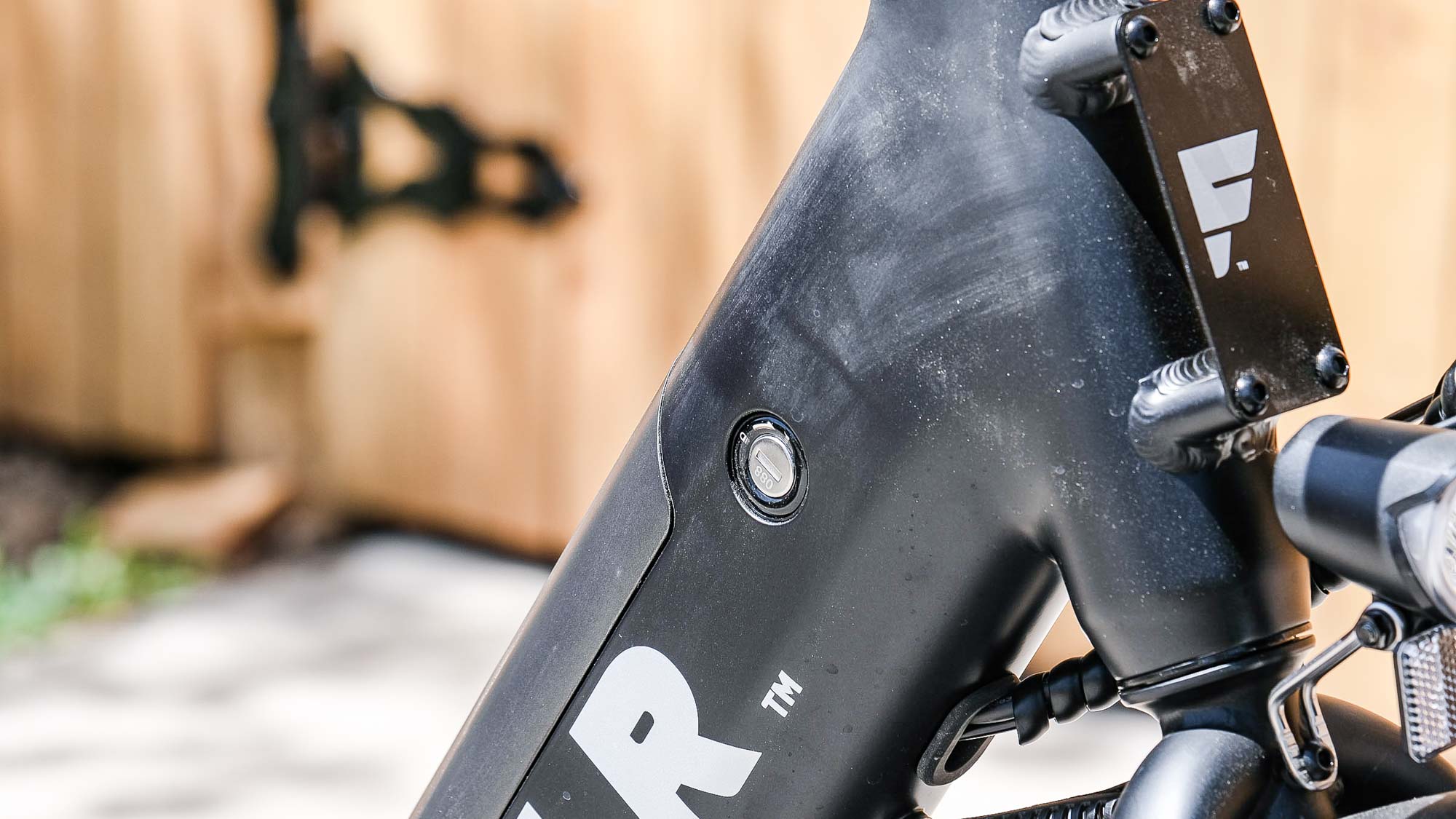
One downside is the long charging time. Flyer says it can take up to 10 hours to obtain a full charge, which is definitely on the long side compared to its competitors. That said, you can also add a second battery to the frame, which extends the usable range of the bike considerably.
Flyer L885 ebike review: Accessories
The Radio Flyer website offers a range of accessories for the L885. Much of it is cargo-oriented. You can customize your L885 to include the Thule Yepp Maxi child seat for $260, for example. Or you can set your bike up for hauling non-human cargo with storage baskets ranging from 480-$100. There’s even a Kid and Cargo Carrier for $300.
In addition, you can buy an extended range battery for your L885 for $500, mirrors, helmets, water bottles, and t-shirts.
My test bike came with several accessories, including the very cool Kid Cargo carrier that allows you to easily convert it between a kid carrier and a cargo area. It takes quite a bit of work to get it all installed, though, with plenty of parts and small bolts to contend with. Once you’re in a configuration, you won’t be swapping to another without some time and effort.
Flyer L885 ebike review: The competition
The L885 features a similar build to Momentum’s Pakyak and Radpower’s RadWagon 4. While I haven’t tested the Radpower, the Pakyak offers a similar structure and feel. But the Pakyak is lighter, shorter, and generally more consistently powerful than the L885. However, the Payak costs almost three times as much as the L885. So if you’re after a functional cargo bike at a low cost, the L885 certainly fits that bill.
Flyer L885 ebike review: Verdict
The L885 offers enough capability and function to make it a valuable vehicle replacement tool at a lower price than much of the e-cargo-bike competition. It’s far from perfect, and it’s quite loud. It needs some refinements, particularly around the kickstand and the motor noise. And it absolutely needs to shed some weight. But it allows riders to replace most automobile trips at a very reasonable price, which makes it easier to overlook most of the L885’s shortcomings. It’s a good, not great, entry into the e-bike market for Flyer.
Dan Cavallari is the former technical editor for VeloNews Magazine, who currently reviews electric bikes, bike lights, and other bike accessories for Tom's Guide. In addition to VeloNews, his work has appeared in Triathlete Magazine, Rouleur Magazine, CyclingTips.com, Road Bike Action, Mountain Bike Action, CycleVolta.com, Tomsguide.com, and much more. Dan also hosts two podcasts on his site, Slow Guy on the Fast Ride: One is about cycling and other outdoor activities, while the other looks at mental health issues. Most recently, Dan also covered the 2022 Tour de France. Dan lives outside of Denver, Colorado with his family.
